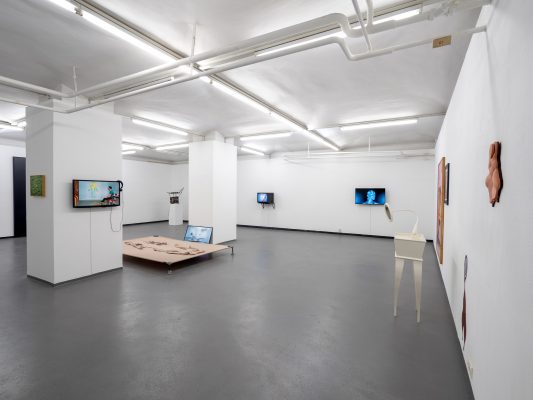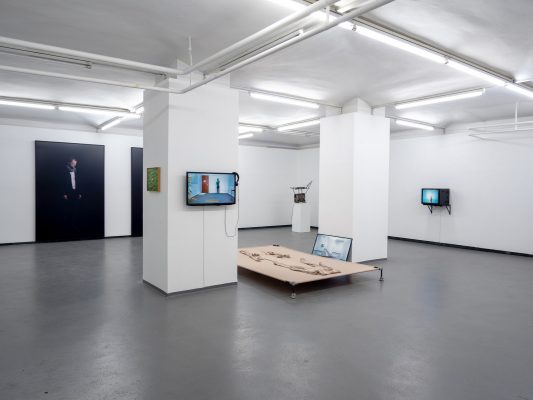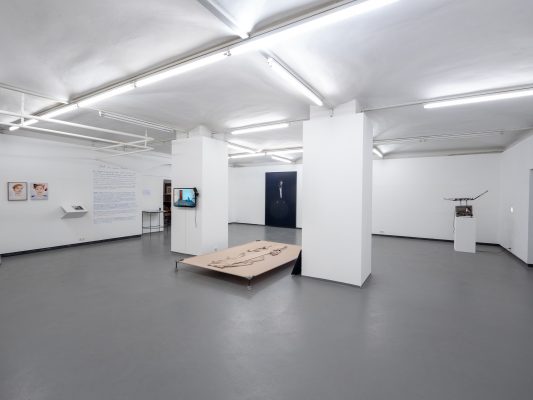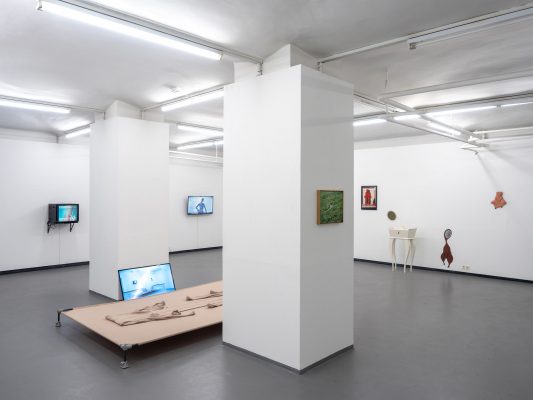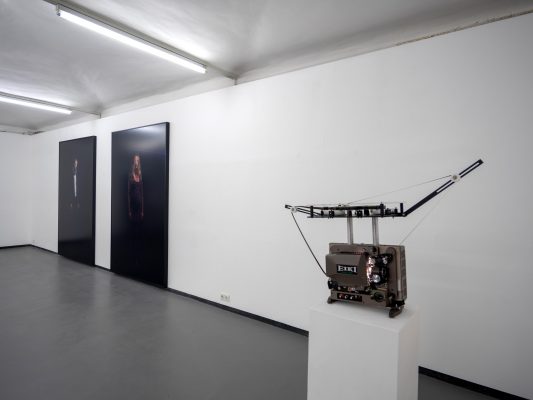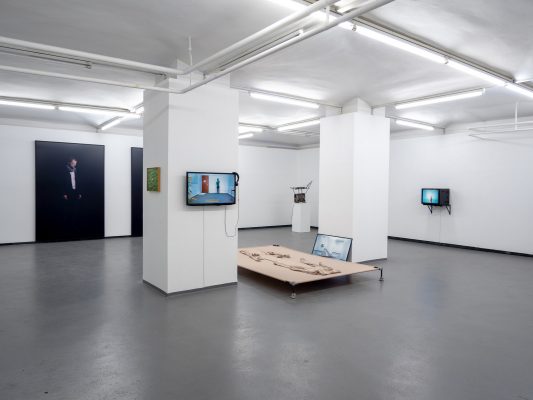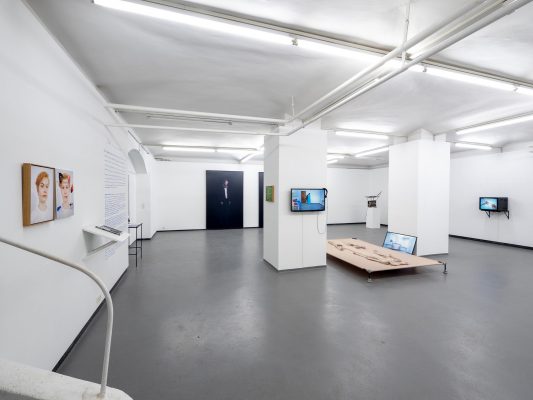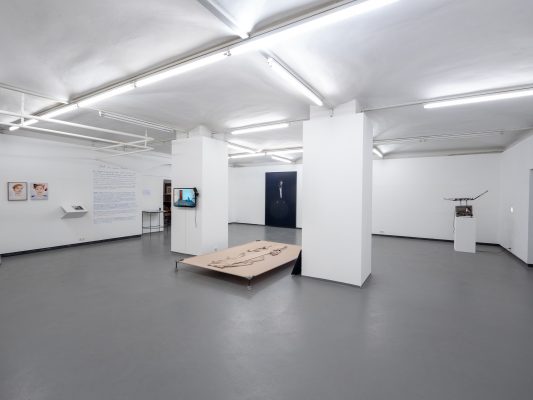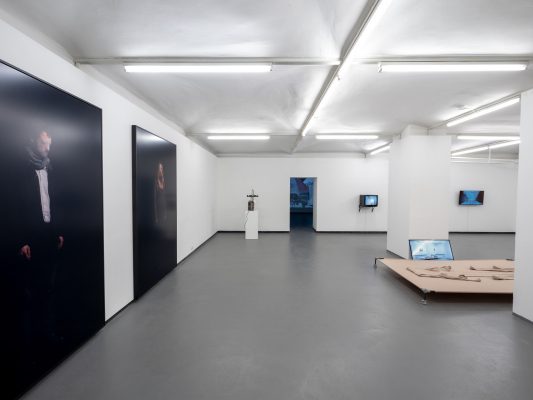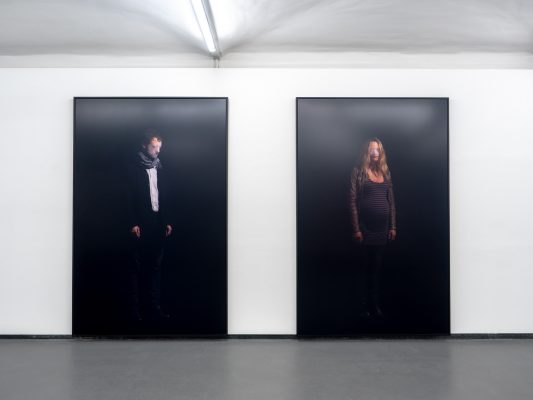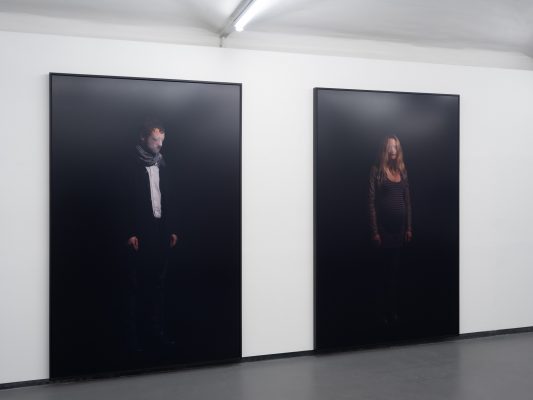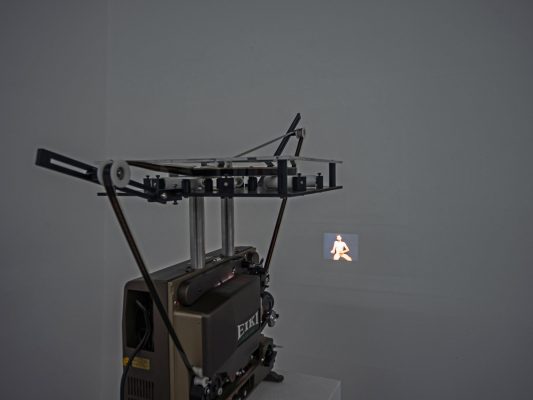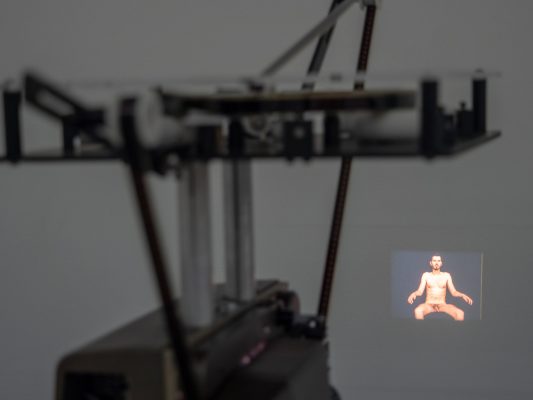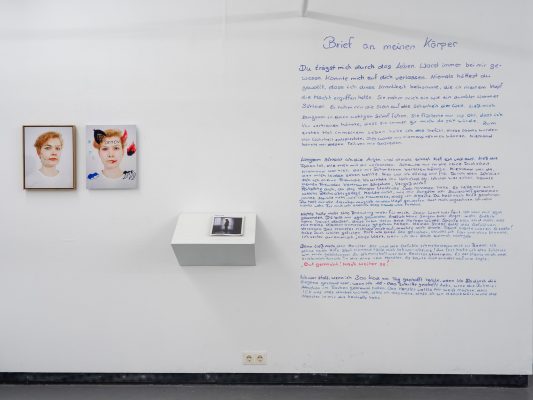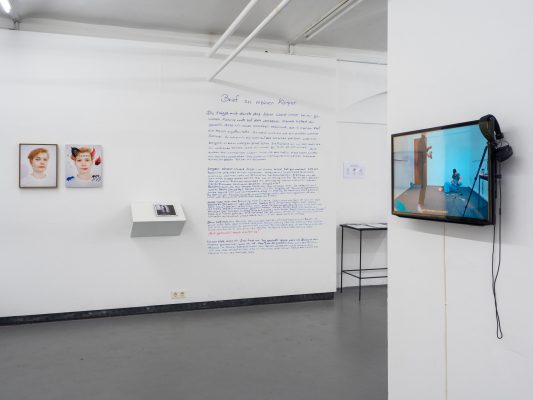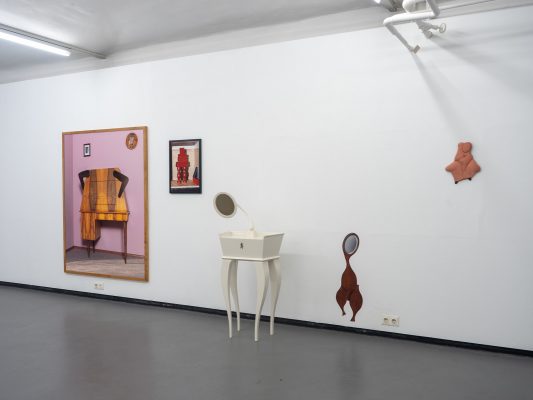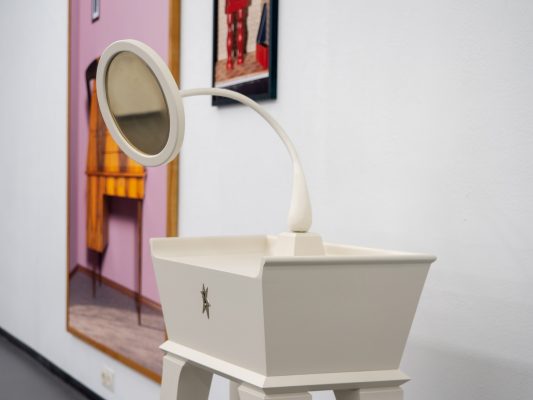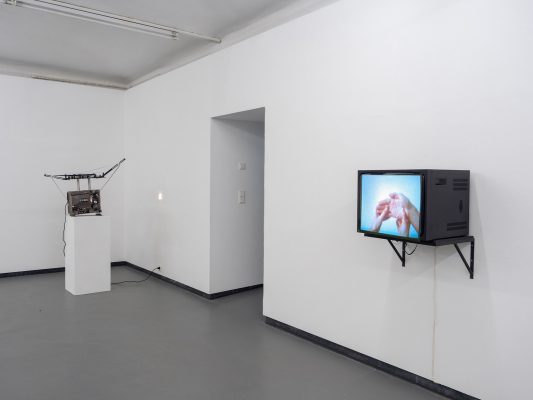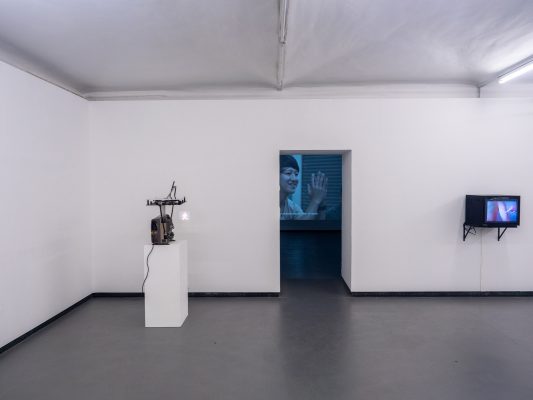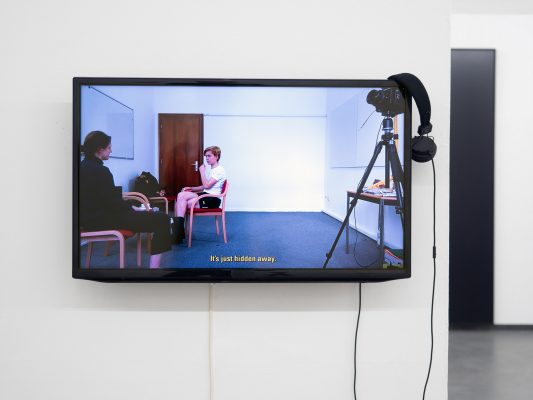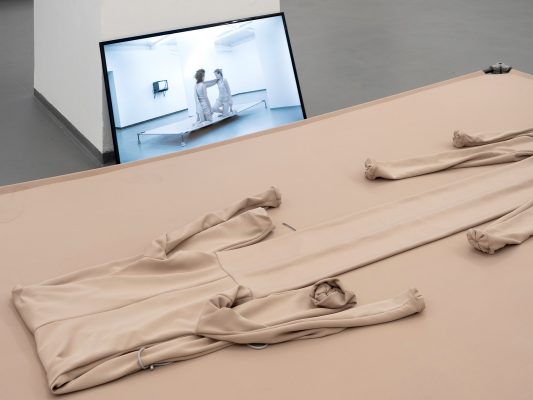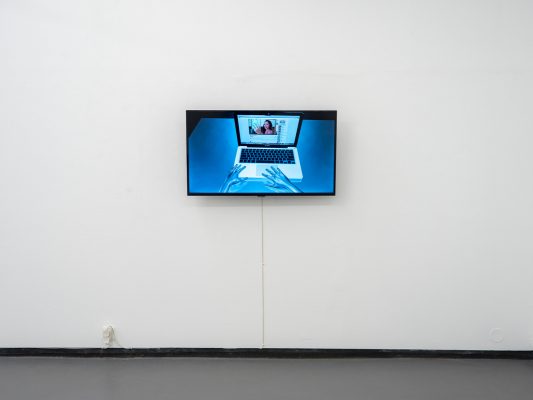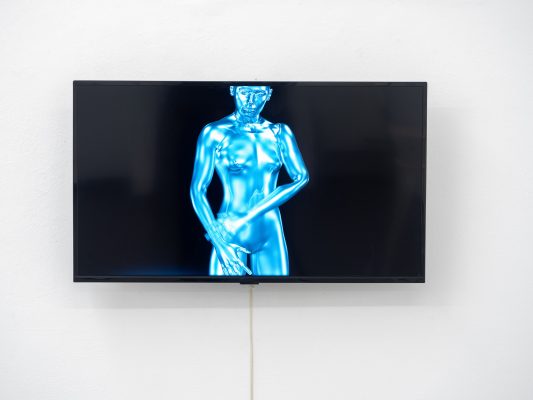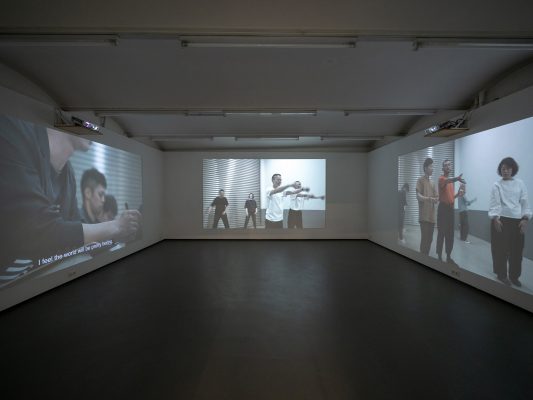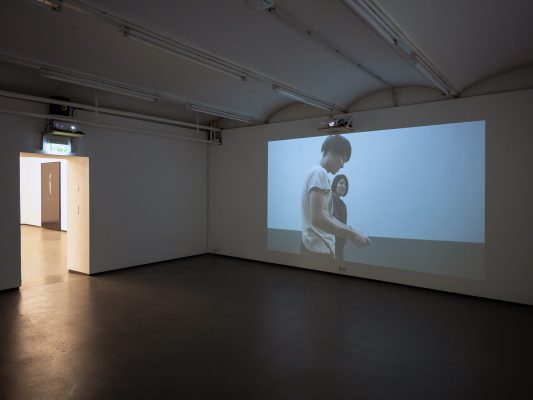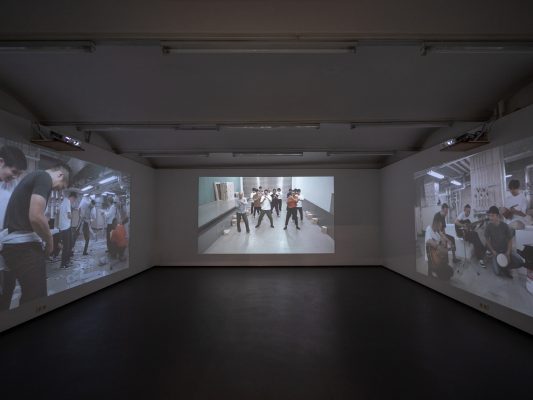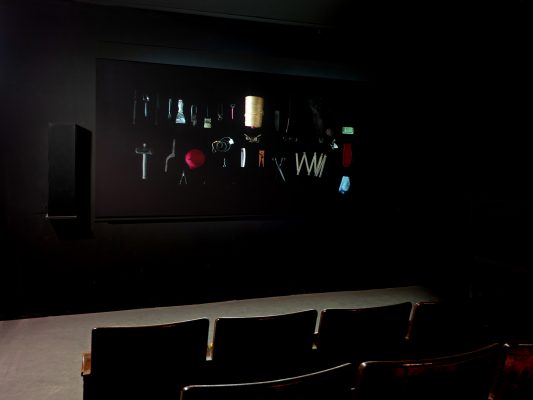Opening: Monday, 31 August, 7 p.m.
Introduction: Petra Noll-Hammerstiel
Opening performance:
Malin Bülow, Elastic Still Lives, performed by Chiara Bartl-Salvi and Pia Wu
Finissage and RITUALS catalogue presentation:
Thursday, 1 October at 7 p.m.
Artist talks on our online-cinematheque
sponsored by: BMKOES; MA7-Kultur; Cyberlab
thanks to: Gallery hunt kastner, Prague, and Gallery Tanja Wagner, Berlin
Rituals are an important component in human expression and communication behaviours and tell us much about the values, understanding of roles and social interaction where they often assume a regulatory and supportive function. The complexity of the substantive issues and the great importance of rituals for humanity inspired the curatorial team of the FOTOGALERIE WIEN to put a focal point on this theme with a series of four exhibitions for the years 2019/2020. The term “ritual” was originally only in common use in liturgical and/or ceremonial contexts but is now in general use at every social level. A ritual is a series of actions carried out according to fixed rules, usually in a specified order. This is primarily aimed at engendering identity and meaning and correlates with a desire for orientation, knowledge and community actions. It is distinguishable from everyday habits i.e. from instrumental, regular and, above all, purposeful activities that can, however, have a “ritual character” ascribed to them. First and foremost, therefore, rituals occupy the spiritual and emotional sphere. Additional characteristics are enactment, processuality and, usually, a high degree of symbolism too.
The four exhibitions are concerned with social rituals and their associated networks of relationships: with rituals that articulate demonstrations of power, suppression and exclusion along with religious and other ceremonial rituals. In the course of this, the codes, behaviours and forms of communication related to the various rituals will be examined.
One of the formal foundational elements of ritual is its performativity. The artists in this exhibition are showing works in which the body takes an explicit role in ritual acts both formally and substantively. This includes issues of self-optimisation in the areas of fitness, health, beauty, sexuality, happiness and achievement. The rituals carried out here are often based on the moral imperatives and manipulative standards of society as well as life-style trends in the internet and they may lead to compulsive acts by the individual. Another issue here is how artificial intelligence and automation affect human (physical) work and how new definitions of the body arise via virtuality. Yet other artists examine how familial, hierarchical structures determine the positions of the individual members or how pedagogical rules and conventions lead people into a balancing act between submission and rebellion.
The artist and choreographer Malin Bülow shows the performance Elastic Still Lives which will be presented as a video during the exhibition – a metaphor for the physicality and processual character of ritual. For her performances and performative installations Bülow uses elastic materials as an element of action – just as in Elastic Still Lives, where two performers act as so called activators. These are clothed in neoprene suits which encase their bodies like cocoons, concealing them almost to the end. A long neoprene pipeline fuses the two bodies. Slow, organically flowing, apparently endless and very aesthetic movements are the signature of this sculptural “elastic still life”. What is negotiated here are the limits of physical bodies and the relationship between them: in their efforts to stay in balance, the performers support themselves on their physical counterparts.
Stine Deja’s short video, The Perfect Human, is based on the eponymous short film by the Danish filmmaker, Jørgen Leth (1967), in which he reflects on what it means to be a human – more precisely a perfect human – and which he realised in the black and white aesthetics of the 1960s. A man and a woman carry out various acts. A voice-over introduces them as perfect humans and explains their physical characteristics and their actions. Deja ‘re-wrote’ the film and digitalised it. A naked silvery avatar moves in the infinite virtual space. Here, too, a male voice-over declares how the perfect humans function, how they look, how they feel, what they are doing, asks, what they think. Is the technological body more perfect than the human one? Deja interrogates the relationship between human and machine in a digital future.
In the stage-like installation, Der hölzerne Versuch einer Familienaufstellung, Tobias Izsó´s wooden sculptures, photo objects and photographs, stand in for family members. The work refers to the eponymous psychotherapeutic method of finding a solution to family issues. Relationship patterns are made visible on a spatial level through a change of positioning and the concomitant questioning. Izsó’s works, distributed throughout the exhibition space, stand for the me, father, mother and grandmother and demonstrate their relationship to each other. They are assigned “typical” gender as well as individual characteristics – as sensed by the “me”. These are each represented with the attributed piece of furniture, the material from which it is made, and the postures being ascribed to each individual. They refer to the fundamental everyday actions with ritualistic, structure-determining character.
The central issues in Eva Koťátková’s works, which are usually theatre-like staged pieces, are the power structures behind (pedagogical) normalisation, manipulation and control mechanisms, conventions and rituals. Unreflected, these can lead to regimented thinking, compulsive behaviours and limitations of the body in a biological, social and political sense. Children are the protagonists of her surreal, 46-minute film entitled Stomach of the World which is made up of a number of episodes. They carry out at times threatening voice-over instructions for disconcerting “exercises”. Koťátková`s symbolic conception of the world is as a body, or more specifically, a digestive system – an all-consuming stomach – a chaotic organism situated between adaptation, stasis, control, fear and empathy or the collisions of the inhabitants.
Mafalda Rakoš is showing photos from the series A Story to Tell, or: Regarding Male Eating Disorders, for which she and journalist Ruben de Theije collaborated with a number of men who suffer from various eating disorders. The work involves transposing drawings which were made by those affected onto the walls of the exhibition space, which reflect their emotions and experiences. Eating disorders are relatively common, particularly in Western industrialised countries and especially among women. Men are in the minority here and thus receive less notice. In meetings with Rakoš and Theije in a therapy-like scenario they spoke of their feelings and fears, of the pressure of social expectations and of exclusion. These talks, accompanied by self-optimisation rituals, resulted in intimate portraits of the protagonists and in texts. The series has been collected in a book published by Fotohof edition, Salzburg.
Raphael Reichl’s conceptual silent 16mm short film, t t t touch me, (from a Super 8 film) is concerned with communication rituals in the digital society, with new gestures and body postures which, contrary to the usually unconscious movements in a live conversation, are intentionally employed and mentally controlled. The characteristic finger movements are limited to typing, pressing, stoking, swiping; the counterpart is the touchscreen of a smartphone. These standard gestures lead to a modified pattern of communication behaviours. In his film Reichl transposes the hand movements of a digital conversation from the touchscreen to the sensitive surface of a naked body of a man, an allusion to the dangers in the loss of physical contact through digital communication.
Roland Reiter‘s large format photo series, Transformed Identity, shows full-body staged portraits of men and women whose faces have been covered in translucent silicon. This „asking” (veiling) and estranging of the subject raises issues around identity and transformation. Reiter also engages with reality shifts in his sculptural works which, like these photos, often assume a grotesque and absurd character. By making reference to masks, he is also addressing their use in cultic and ritual activities with an elevated social, cultural and religious meaning. Masks are used purposely as veneration, protection, defence and in order to effect a transformation into something else. As in the case of Reiter, they also always stimulate our curiosity as to what lies behind them.
Every ten years, Albert Sackl undergoes a self-imposed, compulsive ritual that undermines prevailing social expectations of maleness or potency in a way that is both humorous and serious. To achieve this he is merciless in placing his naked body in full frontal view on display engaged in a ritual activity – he attempts to maintain an erection for four hours. The concept has resulted in a three-part silent film work, steifheit 1–3 / 7 where the 7 indicates four other attempts. Driven by porn magazines and later a smartphone, he carries on an absurd battle in front of the camera. While initially his show is dominated by playfulness and slapstick, later, due to his increasing age, other aspects like ordeal, forlornness and insecurity come to surface.
Anna Witt’s three-channel video installation, Unboxing the Future, examines the consequences of economically instigated automation of human work, the loss of self-determination and community. The video was shot in the city of Toyota in Japan where, at the eponymous car producer’s assembly line, half of the workers are robots. In the film, in parallel to the robotic work, conveyer-belt workers undertake the movements of their daily, ritualised work procedures together with the artist. There are additional performative interludes and an activity sequence in which the workers reciprocally cut off their uniforms – an act of liberation from mechanical domination. These are combined with personal statements by workers and staff, philosophical thoughts and a critical analysis of work systems.
(textual support: Petra Noll-Hammerstiel)
